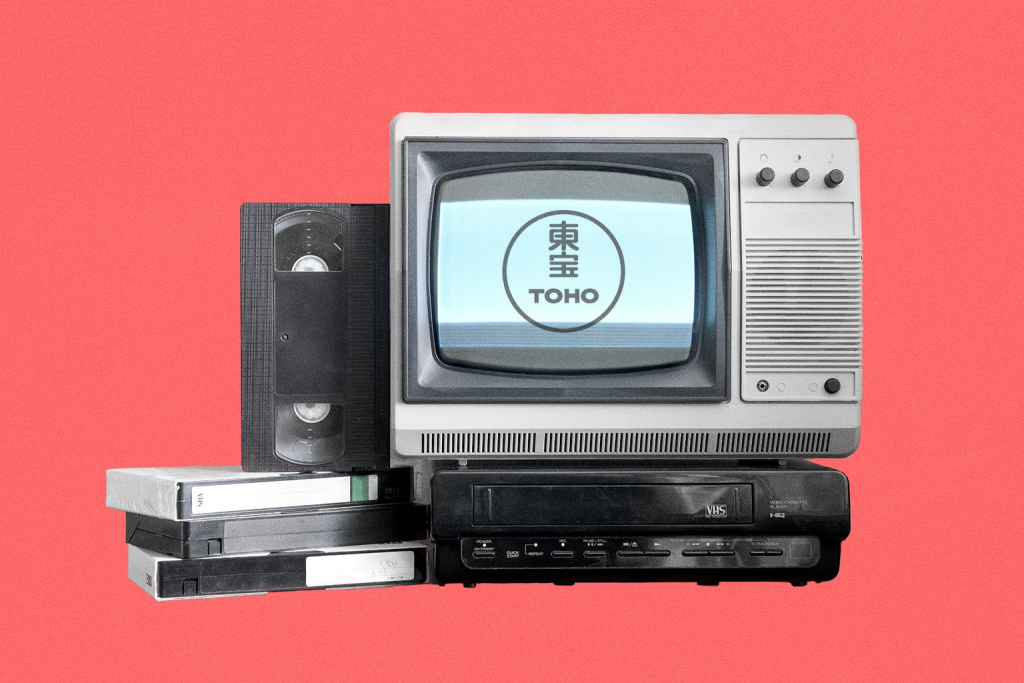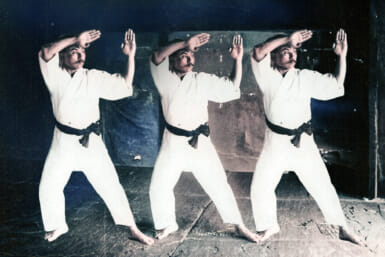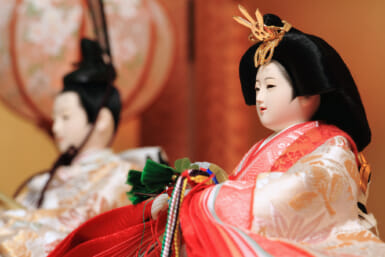In this month’s List of 7, we’re looking back at some of Toho’s most iconic films to commemorate the company’s 90th birthday. From Mikio Naruse’s Three Sisters with Maiden Hearts, the first motion picture produced by Toho (then known as Photo Chemical Laboratory), to recent box-office hits such as Weathering with You and Shin Ultraman, it’s a corporation that has had a huge impact on the Japanese movie industry.
So, what are the Toho films that left the biggest impressions on audiences? Preparing a list like this you could make a case for simply including just Akira Kurosawa flicks, but we already covered them here. Then there are the Ghibli co-productions, which could also easily make up the seven choices. Wanting to avoid that, we decided to feature just one movie per director.
1. Seven Samurai — Akira Kurosawa (1954)
While Akira Kurosawa directed several masterpieces, Seven Samurai is considered his magnum opus. Set in the 16th century, the story is a fairly straightforward one. A group of local farmers turn to seven unemployed samurai for protection after their village is again ransacked by bandits. Slowly they begin to trust each other as the villagers are trained how to defend themselves for the inevitable return of the bandits and the conflict that ensues.
The movie inspired countless Hollywood flicks including, most famously, The Magnificent Seven. In 2018, it was voted the greatest ever non-English-speaking film in a critics’ poll conducted by the BBC.
“I had never seen anything that powerful or cinematographic,” said Star Wars director George Lucas. “The emotions were so strong that it didn’t matter that I didn’t understand the culture or the traditions. From that moment on, Kurosawa’s films have served as one of my strongest sources of creative inspiration.”
2. Godzilla — Ishiro Honda (1954)
The success of Eugene Lourie’s American science-fiction monster film The Beast from 20,000 Fathoms encouraged Toho to make something similar. Producer Tomoyuki Tanaka subsequently went to Indonesia in search of a co-production. However, the anti-Japanese sentiment there at the time made it impossible. Returning to Japan, Tanaka flew over Bikini Atoll, site of the Castle Bravo nuclear test which contaminated a Japanese fishing boat. The crew suffered acute radiation syndrome (ARS) and the chief radioman passed away a few months later.
This incident inspired Tanaka to create a monster born from nuclear testing. Known as “Project G,” he asked screenwriter Shigeru Kayama to come up with a story in May 1954. Six months later, Godzilla was released in Japan. Directed by Ishiro Honda, it received mixed reviews domestically. Then came the heavily re-edited Americanized version, Godzilla King of Monsters! in 1956. After being introduced to a worldwide audience, the prehistoric sea monster became a global phenomenon.
3. Woman in the Dunes — Hiroshi Teshigahara (1964)
In 1966, Hiroshi Teshigahara became the first filmmaker of Asian descent to be nominated for a Best Director gong at the Academy Awards. He earned the nomination for Woman in the Dunes, a movie that also received a Best Foreign Language Film nod a year earlier and won the Special Jury Prize at the Cannes Film Festival. It’s based on a classic novel of the same name by Kobo Abe, who also adapted the screenplay.
A Japanese take on the myth of Sisyphus, it’s a commentary on the claustrophobic and limiting nature of existence. After missing his last bus home, amateur entomologist Niki (Eiji Okada) is convinced by locals to stay the night at the house of an unnamed woman (Kyoko Kishida) at the bottom of a sand pit. It’s only accessible via a rope ladder which then disappears when he tries to leave. Tricked into slavery and threatened with starvation, he must help the woman shovel the encroaching sand or die.
4. Tampopo — Juzo Itami (1985)
What Japanese movie can you watch again and again? That was the question we posed to our readers last year. The clear winner was Juzo Itami’s cult classic Tampopo, which was also named by Edward Norton when he was asked to list his top five movies of all time. “Tampopo is sometimes called a noodle western because it’s about a woman’s search to make the perfect ramen noodle and a Japanese cowboy who helps her on her quest. It’s hard to even quantify what’s great about this movie,” he said.
The titular character, played by Nobuko Miyamoto, begins the film as a damsel-in-distress type figure. Running a sub-par ramen shop, she is rescued by truck driver Goro (Tsutomu Yamazaki) and his sidekick Gun (Ken Watanabe). The former then teaches her how to make a success of her business. Within the central plotline, there are then a series of ingenious vignettes centered around food. A number of ramen restaurants around the world have been called Tampopo because of the film. It was also heavily referenced in Robert Ackerman’s comedy-drama The Ramen Girl starring Brittany Murphy.
5. Akira — Katsuhiro Otomo (1988)
In 1987, George Lucas and Steven Spielberg were offered the opportunity to bring Akira to western audiences. Both turned it down, saying it wasn’t marketable in the US. In fairness to the pair, they weren’t the only ones who had doubts about the film. After watching it for the first time, director Katsuhiro Otomo returned home and told his wife it was a failure. He was wrong. Very wrong. The apocalyptic future-Tokyo story changed the world of animation forever.
Based on Otomo’s universally acclaimed manga of the same name, the story’s set in 2019 in a dystopian Tokyo run by military personnel and a corrupt government. It explores themes still relevant today such as civil unrest, terrorism and religious zealotry. Spookily, it predicted the Tokyo 2020 Olympics alongside calls for the Games to be canceled. Movies influenced by Akira include The Matrix and Looper. It also inspired dramas such as the Netflix show Stranger Things and music videos by artists like Michael Jackson and Kanye West.
6. Princess Mononoke — Hayao Miyazaki (1997)
Prior to his imprisonment for rape and other sexual assault offenses, Harvey Weinstein was known as a man who always got his own way. Well, nearly always. In the late 1990s, the Miramax co-founder wanted to shorten Princess Mononoke from 135 minutes to 90 for American audiences. According to film executive Steve Alpert, producer Toshio Suzuki subsequently presented him with a replica samurai sword before shouting “Mononoke Hime No Cuts!” Director Hayao Miyazaki told The Guardian, “I was bombarded with this aggressive attack, all these demands for cuts. I defeated him.”
Princess Mononoke follows the journey of exiled Prince Ashitaka who attempts to make peace between warring animals and humans. Darker and more violent than his previous works, Miyazaki was influenced by the bloody break-up of Yugoslavia. “The war happened … and I learned that mankind doesn’t learn,” he told Empire magazine. “After that, we couldn’t go back and make some film like Kiki’s Delivery Service. It felt like children were being born to this world without being blessed. How could we pretend to them that we’re happy?”
7. Confessions — Tetsuya Nakashima (2010)
There’s something unnerving about how calmly Yuko Moriguchi (Takako Matsu) delivers the opening monologue in Tetsuya Nakashima’s psychological thriller Confessions. Her tone hardly changes as a seemingly pleasant farewell speech soon turns sinister. Her daughter, she says, was killed by two pupils in the class. As they’re protected by Article 14 of the penal code, it’s up to her to get her own justice. She has subsequently decided to inject the HIV-contaminated blood of her late daughter’s father in their milk.
Like Kanae Minato’s critically acclaimed debut novel upon which it’s based, the film then adopts a Rashomon-like multi-perspective narrative. We hear the confessions of Naoki (Kaoru Fujiwara) and Shuya (Yukito Nishii), the two boys involved in the crime, as well as the former’s mother (Yoshino Kimura) and suicidal misfit, Mizuki (Ai Hashimoto). It’s a disturbing and hypnotic tale shot in dark blue and black color palettes that contrast sharply with Nakashima’s vibrant and uplifting previous films such as Kamikaze Girls and Memories of Matsuko. A box office hit, it won four awards at the 34th Japan Academy Prize, including Best Picture.
Feature Image by Anna Petek









